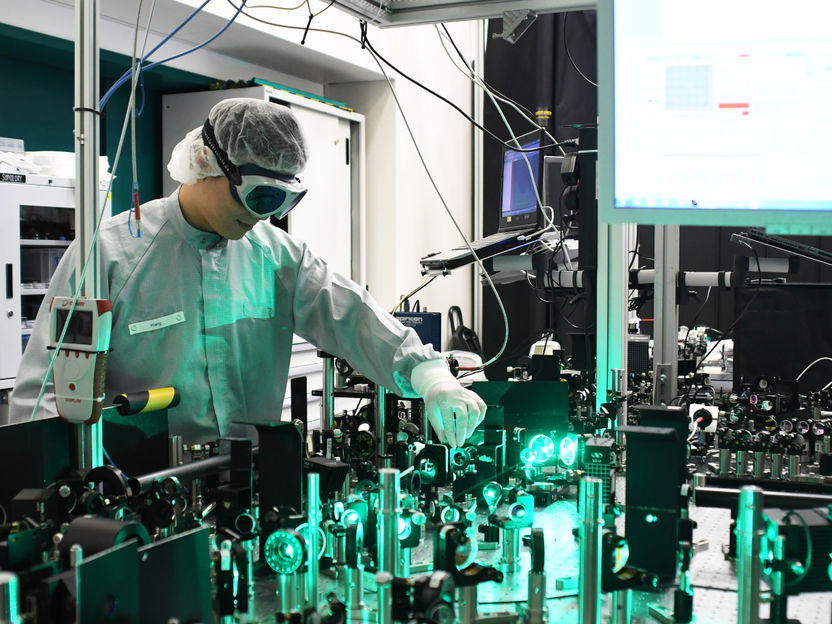New device detects bacteria and tests for antibiotic resistance
An interdisciplinary team of engineering and pharmaceutical researchers at the University of Alberta has invented a device that can rapidly identify harmful bacteria and can determine whether it is resistant to antibiotics.
The device could save precious hours in patient care and public health, and prevent the spread of drug-resistant strains of bacteria.
The device was designed to look for and trap different types of bacteria, then find out which antibiotics are most effective against them.
Rather than growing bacterial cultures then testing them--a commonly used and time-consuming approach--the microscopic device relies on nano-scale technology for fast results.
The main feature of the device is a cantilever--a plank that resembles a diving board--that has a microfluidic channel 25 times smaller than the width of a hair etched on its surface. The channel is coated with biomaterials, like antibodies, that harmful bacteria like E. coli or Listeria in fluid samples stick to.
When bacteria are caught, the device sends out three different signals to researchers.
When bacteria is detected the cantilever's mass changes, and it bends, explained Thomas Thundat, a professor in the Department of Chemical and Materials Engineering and the Canada Excellence Research Chair in Oil Sands Molecular Engineering. "So this gives us two signals: the mass change and the bending action."
By shining infrared light on the bacteria, a third signal is sent, he added. If the bacterial absorbs the light it begins to vibrate, generating a minute amount of heat that sends a confirmation signal. Having three detection methods "means there is no ambiguity," Thundat said.
"By monitoring the interaction of light and bacteria, we can get highly selective detection of bacteria," said Faheem Khan, a researcher in Thundat's lab. "It's our moment of truth."
With the bacteria trapped in the cantilever, different antibiotic drugs can be added to the device. And changes in the intensity of tiny oscillations of the cantilever signal to researchers whether the bacteria are alive or dead. The researchers then know which antibiotics the bacteria are susceptible to.
"We're trying to find a way to fight bacterial resistance to drugs and prevent or at least decrease the spread of drug-resistant strains," said Hashem Etayash, a PhD student in the Faculty of Pharmacy and Pharmaceutical Sciences. "We're able to do several tests in a very short period of time and we can quickly identify bugs that can resist antibiotics."
The device can be used to test extremely small fluid samples, millions of times smaller than a rain droplet. Thundat says the size of the device is advantageous when you only want a very small sample, in settings such as a neonatal intensive care unit, or in situations where only very small samples are available.
The research was funded through the Government of Canada's Canada Excellence Research Chairs program.
The team has patented the technology and Etayash and Khan are hoping to design a hand-held prototype of the device and bring it to market.
Original publication
Other news from the department science

Get the life science industry in your inbox
By submitting this form you agree that LUMITOS AG will send you the newsletter(s) selected above by email. Your data will not be passed on to third parties. Your data will be stored and processed in accordance with our data protection regulations. LUMITOS may contact you by email for the purpose of advertising or market and opinion surveys. You can revoke your consent at any time without giving reasons to LUMITOS AG, Ernst-Augustin-Str. 2, 12489 Berlin, Germany or by e-mail at revoke@lumitos.com with effect for the future. In addition, each email contains a link to unsubscribe from the corresponding newsletter.
Most read news
More news from our other portals
Last viewed contents
Calcarine_fissure
Sacrum
Scurvy
Agilent Technologies to acquire Advanced Analytical Technologies, Inc.
Fairy_ring




















































